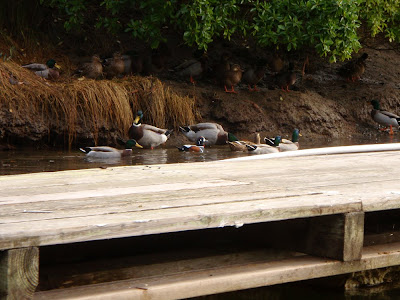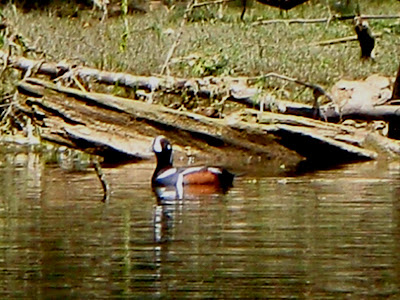Feb 22 2012
Whitewater River Kayaking
Rain on the North Coast of California usually happens in the winter and early spring and has us traveling inland to the rivers of the Coastal Range for whitewater river kayaking. 2012 has been a dry year so far. Yesterday we managed to get over to the Eel for a low-water run that was Jeff’s second run and my first of the season. While we love the surf and the spray of salt-water, there is nothing quite like floating downstream.
The media has many people envisioning whitewater kayaking as paddling over death-defying waterfalls or hairy first descents of big water rivers in little traveled parts of the world. We don’t have any of these death-defying trips in our plans but respect the courage and skills that it takes for this type of boating.
What we like about whitewater kayaking is the adventure of journeying through a river canyon. We like the technical aspect of running rapids – water reading, precision boat control, and composure under pressure (like when you capsize in turbulent 45 degree water or miss your line and quickly have to find a new one).
We also like the planning, preparation and training for emergencies that might occur on our trips in the wilderness. On our trips, we are the only solution to problems that might occur so a toolbox (drybags) of items packed into our tiny boats is a must. First aid materials, extra paddles, throw ropes, carabiners, webbing, extra food, and emergency supplies are typical items that we carry and practice using.
Most of all, we enjoy the landscape and wildlife that one only sees while paddling on the river. Yesterday, we saw and heard lots of American Dippers. These are small birds that like us enjoy swift moving fresh water. They are known to walk on the bottom of creeks, streams, and rivers in search of insects and aquatic invertebrates.
Yesterday, we also were privileged to see several bald eagles including several dining on the carcasses of spawning salmon.
It is a pretty special feeling to be floating down the river and see black tail deer casually watch us go by. Perhaps they are unalarmed because they know that we are only passing through or just accept us as part of the movement of the river. Other unexpected wildlife sitings are another perk of floating down river.
As we finalize our spring calendar, our thoughts keep returning to the river. In addition to teaching whitewater kayaking classes on the river, our hearts long for a multi-day whitewater trip. Last year we blocked out 2 weeks in April to paddle and enjoy the Eel River. We have a similar window of time this year before we get busy with the summer season. Where will we go? The only plan now is to go with the flow – down river.













































